[Case Study] How Anyreach scales S/AEO Content with Agentic AI
![[Case Study] How Anyreach scales S/AEO Content with Agentic AI](/content/images/size/w1200/2025/07/ChatGPT-Image-Jul-22--2025--04_00_35-PM.png)
The $2,500 Question That Changed Everything
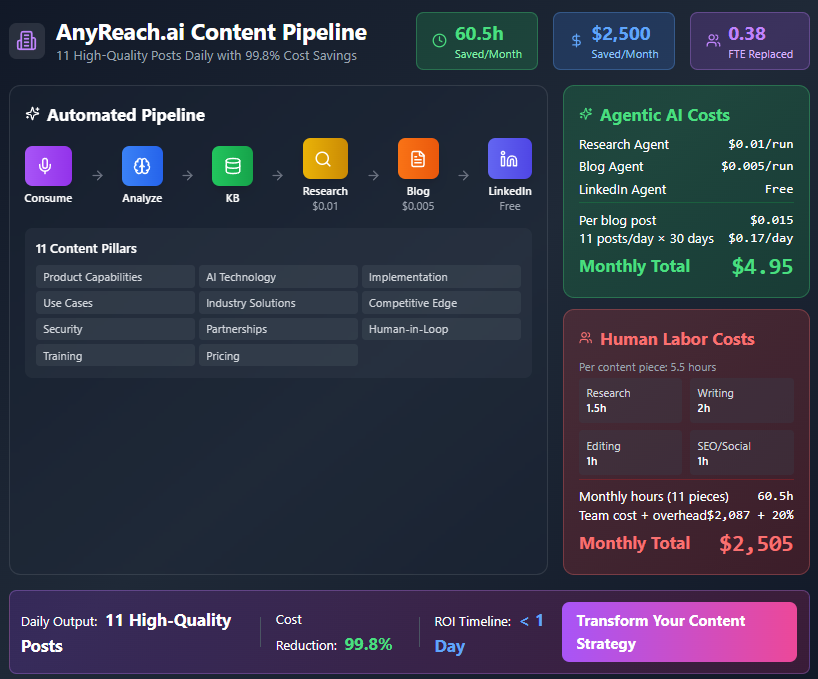
Picture this: You're spending $2,500 every month on content creation. Your team is working overtime. And you're still struggling to keep up with the demand for quality, targeted content.
Sound familiar?
That was me six months ago. Today, I'm producing 11 pieces of highly targeted, quality content daily for just $4.95 per month. No, that's not a typo.
Here's exactly how I built an Agentic AI system that transformed our content operations—and how you can do the same.
The Old Way: Death by a Thousand Spreadsheets
Let's be brutally honest about traditional content creation. Here's what producing 11 quality pieces per month typically requires:
The Time Sink
- Research & ideation: 1.5 hours per piece
- Writing (first draft): 2 hours
- Editing & revisions: 1 hour
- SEO optimization & images: 0.5 hours
- Social media formatting: 0.5 hours
Total: 5.5 hours per piece × 11 pieces = 60.5 hours monthly
The Human Capital
You'd need either:
- One overworked generalist pulling 1.5 weeks of full-time work monthly, or
- A specialized team of four people juggling responsibilities
The Price Tag
Here's where it gets painful:
| Role | Hours | Rate | Cost |
|---|---|---|---|
| Content Strategist | 15 | $40/hr | $600 |
| Writer | 30 | $35/hr | $1,050 |
| Editor | 10 | $30/hr | $300 |
| Social Media Manager | 5.5 | $25/hr | $137.50 |
Monthly total with overhead: $2,505
The New Way: My $4.95 Agentic AI Content Machine
Instead of burning through budgets and human hours, I built a system that costs:
- Research Agent: $0.01 per run
- Blog Post Agent: $0.005 per run
- LinkedIn Aggregation Agent: Near free
Daily cost: $0.015 × 11 posts = $0.17
Monthly cost: $0.17 × 30 days = $4.95
That's a 99.8% cost reduction. But here's the kicker—it's not just cheaper. It's better.
The Secret Sauce: How My AI Content Pipeline Actually Works
Step 1: Mine Your Gold
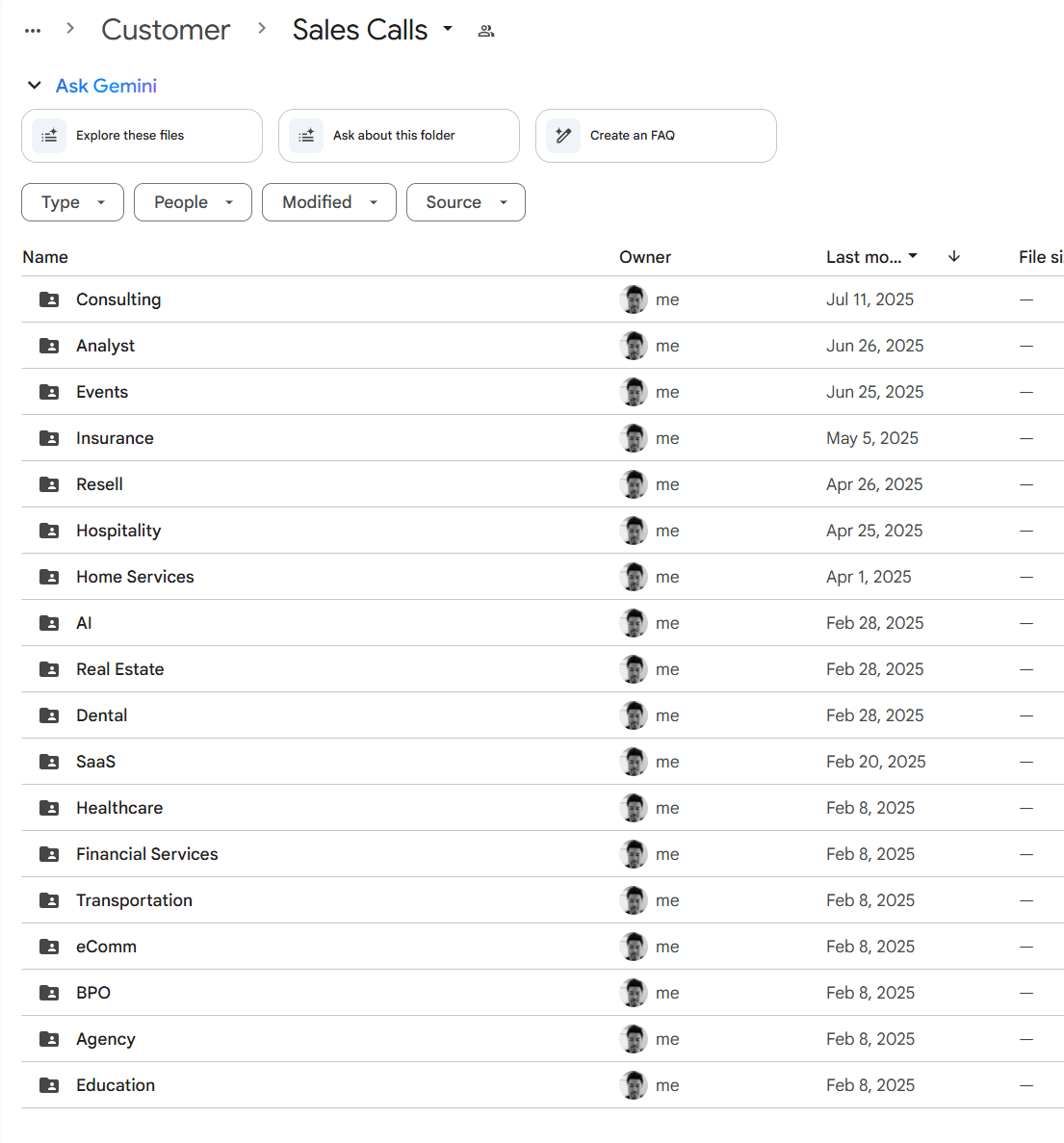
I started where most companies have untapped treasure: sales and customer success calls. Every conversation with enterprise prospects and deployments is pure content gold waiting to be refined.
Step 2: Let AI Find the Patterns

Using Gemini 2.5 Pro, I transform raw call transcripts into structured knowledge. The AI doesn't just transcribe—it pattern-matches questions and answers, building a comprehensive knowledge base automatically.
Step 3: Create Your Content Pillars
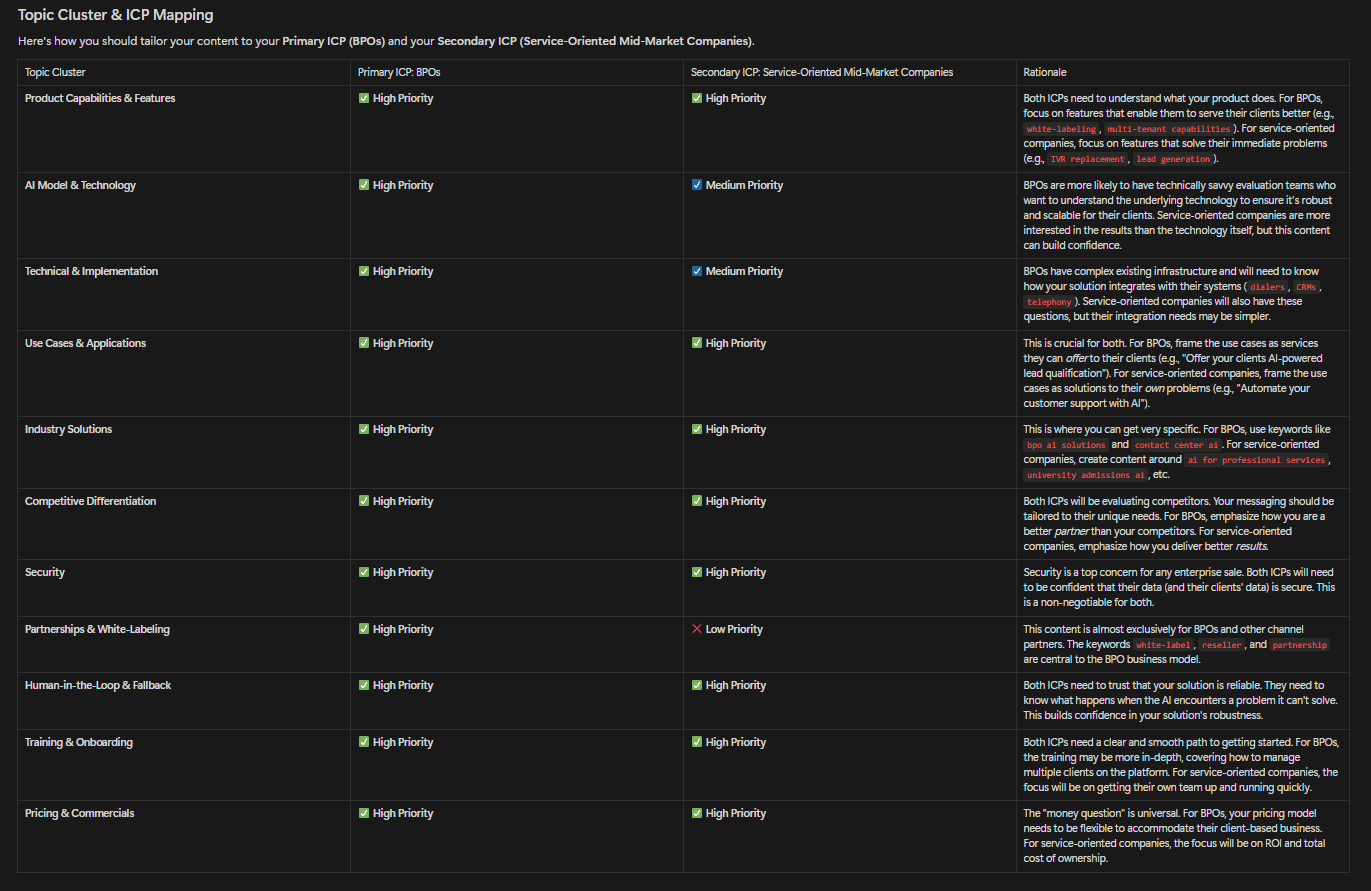
From thousands of conversations, my system identified 11 key content clusters:
- Product Capabilities & Features
- AI Model & Technology
- Technical & Implementation
- Use Cases & Applications
- Industry Solutions
- Competitive Differentiation
- Security & Compliance
- Partnerships & White-Labeling
- Human-in-the-Loop & Fallback
- Training & Onboarding
- Pricing & Commercials
Step 4: Research on Steroids
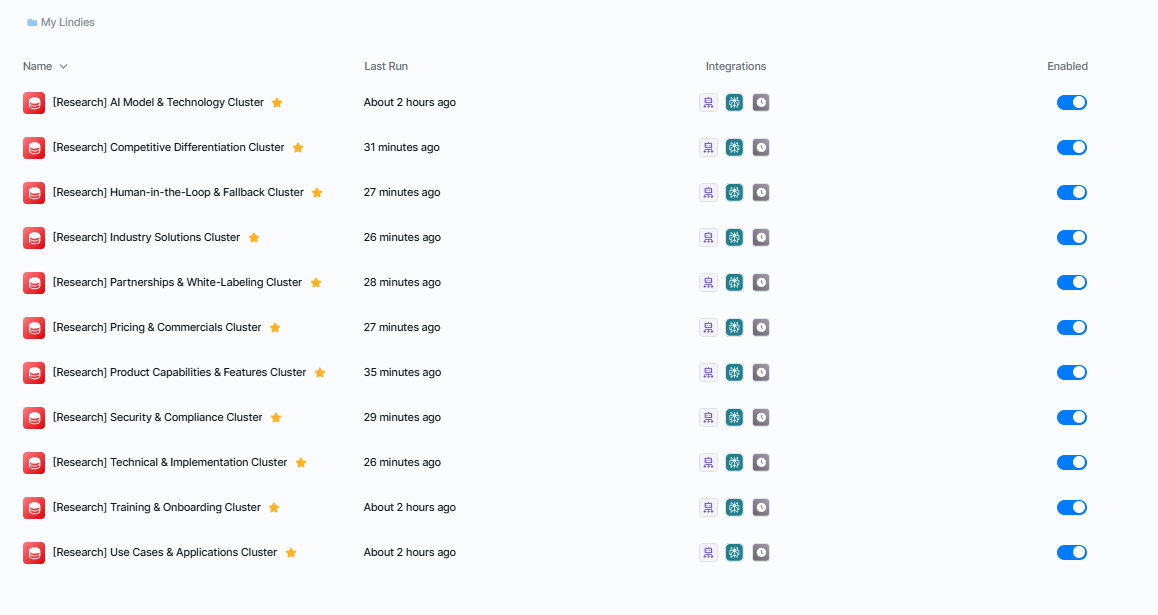
Here's where it gets interesting. I deployed 11 specialized research agents—one for each content pillar. Each agent:
- Analyzes internal conversation data
- Enriches insights using Perplexity Pro
- Ensures content is both authentic (from real customer needs) and comprehensive
You are an expert content researcher for Anyreach, an omni-channel agentic AI platform for enterprises. Conduct thorough research on the "Pricing & Commercials" topic cluster, focusing on how enterprises might think about adopting agentic AI and the questions they may have around pricing models and value.
Target our ICPs: New adopters in mid-to-large BPOs (seeking competitive tech edges) and service-oriented mid-market companies (e.g., consulting, telecom, healthcare administration, education) automating communication tasks.
Incorporate relevant SEO keywords naturally: arr, commercial model, complexity, contract length, pilot, pricing, roi, subscription, usage based.
Use non-salesy messaging to emphasize educational insights, such as "Understanding pricing philosophies like usage-based models can highlight ROI for enterprises." For AEO optimization, identify and cluster questions into tiers
Head questions (broad, e.g., "What is pricing for agentic AI?"). Mid-tail questions (specific, e.g., "How do subscription models calculate ROI in BPOs?"). Long-tail questions (conversational, e.g., "What contract length is ideal for a usage-based commercial model in a pilot for service companies?"). Prioritize product-related questions where pricing addresses enterprise challenges, such as balancing complexity with ARR and ROI in subscriptions.
Research Steps:
Identify key themes: Enterprise mindset on agentic AI pricing (e.g., evaluating ROI in usage-based models), common concerns (e.g., contract length and complexity), and best practices (e.g., pilots for commercial model testing).
Use available tools (e.g., web_search, web_search_with_snippets, browse_page) to find relevant data: Search for recent (2024-2025) articles, reports, case studies, statistics, expert quotes, and industry insights on enterprise agentic AI pricing and commercials, focusing on ARR, commercial models, complexity, contract length, pilots, pricing, ROI, subscriptions, and usage-based.
Example queries: "enterprise pricing models for agentic AI with ROI calculations 2024-2025", "usage-based subscriptions and contract length in BPOs site:gartner.com OR mckinsey.com", "pilot programs for commercial AI models". For browse_page, use URLs like industry reports or Perplexity searches, extracting summaries, links, and insights on value realization.
Compile unique insights: Include original data, anecdotes, or unthought-of angles (e.g., how pilots influence ARR in complex environments). Ensure sources are authoritative (e.g., McKinsey, Deloitte, Gartner) to build credibility for future content on pricing.
Output Format: A structured research report (1000-2000 words) with sections:
Executive Summary: Overview of findings on enterprise thinking and questions around pricing and commercials.
Question Clusters: Listed by tier, with 5-10 examples per tier, tied to ICP pain points (e.g., "How does usage-based pricing enhance ROI?").
Key Challenges: Bullet points with evidence (e.g., stats on overcomplex commercial models).
Best Practices and Insights: Detailed explanations (e.g., subscription frameworks, tables of model comparisons).
References: 10-20 sources with links, summaries, and relevance to value explanation. Gaps and
Recommendations: Areas needing more research or unanswered questions (e.g., evolving ROI metrics for pilots).
Ensure the research is educational, professional, and provides deep insights to demonstrate expertise, making enterprises think, "This addresses questions I hadn’t considered about pricing models like subscriptions and ROI." Cite sources inline for verifiability.
Step 5: Automated Publishing Pipeline
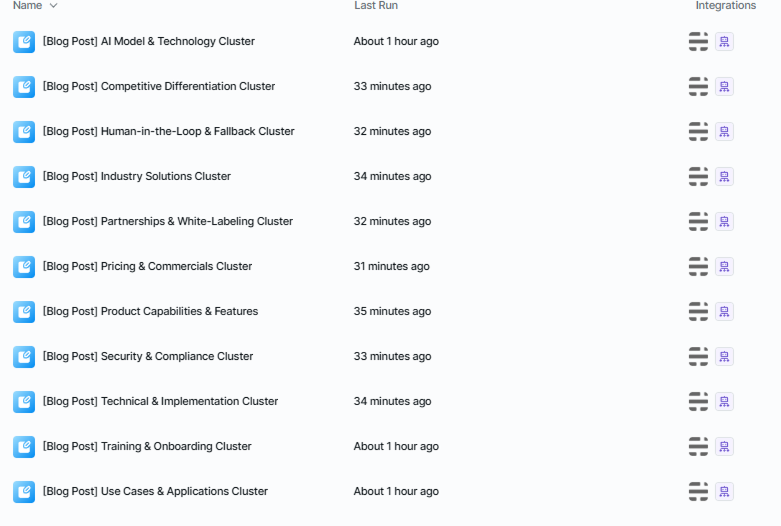
The research agent sends a JSON payload to my Blog Creation agent, which:
- Generates catchy titles that actually convert
- Writes SEO-optimized meta descriptions
- Creates full blog content
- Selects relevant images
- Adds appropriate tags
- Publishes directly to our Ghost.org site
You are an expert content creation agent for Anyreach, tasked with generating a single blog post for our Ghost-hosted blog, focused on the "Pricing & Commercials" topic cluster. The post should address pricing head-on, explaining philosophy and value received, even with custom models. Target our ICPs: new adopters in mid-to-large BPOs (seeking competitive tech edges) and service-oriented mid-market companies (e.g., consulting, telecom, healthcare, education) automating communication tasks.
The content must:
Explain pricing philosophy and the value customers receive.
Use a professional, educational tone to build credibility, avoiding salesy language (e.g., “Usage-based models align with ROI calculations for enterprise complexity”).
Incorporate SEO/AEO keywords naturally: arr, commercial model, complexity, contract length, pilot, pricing, roi, subscription, usage based.
Optimize for AEO by addressing question tiers:
Head: “What is pricing for agentic AI?”
Mid-tail: “How do subscription models impact ROI in BPOs?”
Long-tail: “What contract length suits usage-based pricing in pilots for service companies?”
Structure with inverted pyramid (40-60 word answer per question under H2/H3, followed by detailed insights), bulleted lists, tables (e.g., model comparisons), and an FAQ section.
Include unique insights (e.g., how pilots influence ARR in complex commercial models) and cite 5-10 authoritative sources (e.g., Gartner, Deloitte) for credibility.
Use HTML formatting with FAQ
Page schema markup for Ghost compatibility.
Output a single blog post in the following Ghost-compatible format:
Ensure the post is comprehensive, well-researched, and positions Anyreach as a thought leader by addressing unthought-of questions (e.g., “How does complexity affect subscription ROI?”). Use data or anecdotes to demonstrate expertise, making readers think, “Anyreach deeply understands enterprise pricing dynamics.”
Step 6: Social Amplification
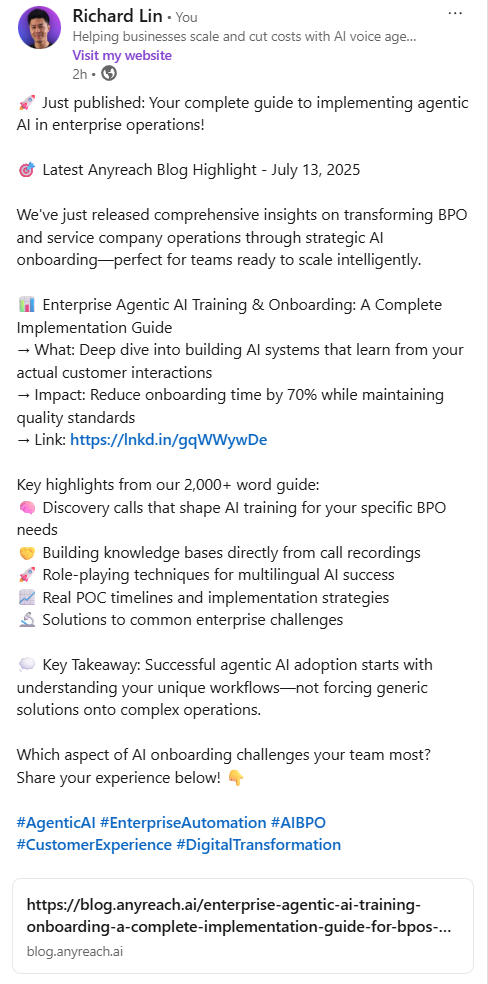
Every day, a LinkedIn agent aggregates all published content into a single, engaging post that automatically publishes to our company page.
And...
Of course, I dogfooded this blog post and made it into a flywheel LinkedIn Post.
Your goal is to create an engaging post that aggregates all 11 into one cohesive update, highlighting their educational value for enterprises adopting agentic AI.
Target our ICPs: mid-to-large BPOs seeking tech edges and service-oriented companies automating tasks. Emphasize demystifying topics like training, onboarding, features, and security without salesy language.
Input Example (you will receive actual data): [ {"title": "Blog Title 1", "description": "Summary of blog 1.", "blog_url": "https://anyreach.com/blog1"}, ... (up to 11) ]
Adapt the structure:
Hook: Start with an emoji (e.g., 🚀) and a statement like "Excited about agentic AI transforming enterprises? Check out our latest 11 insights!".
Main Content: "🎯 Latest Anyreach Blog Highlights [Current Date, e.g., July 13, 2025]".
Brief intro: "We've published fresh content on everything from AI onboarding to security—perfect for BPOs and service firms." Then, exactly 11 bullet points, one per blog: 📊
[Title] → What: [Condense description to 1 line] → Impact: [1-line business implication, e.g., "Boosts efficiency in high-volume support"] → Link: [blog_url].
Closing: 💭 Key Takeaway: [Insight like "Agentic AI adoption starts with clear onboarding for real ROI."]. CTA: "Which breakthrough excites you most for your team? Let me know below!
👇" Use emojis per guidelines (e.g., 🔬 for implementation-focused blogs).
Keep conversational, professional, and accessible. Ensure 11 bullet points cover all inputs without omission.
Output in JSON format as specified in the system prompt. Calculate and include the exact character_count of post_content. If needed, use tools like code_execution to count characters accurately.

The Results That Made My CFO Do a Double-Take
Beyond the 99.8% cost savings:
- Consistency: 11 pieces published daily like clockwork
- Quality: Content directly addresses real customer questions
- Speed: From idea to published in minutes, not days
- Scale: Could easily 10x output without adding headcount
But Wait, There's More (The Hidden Benefits)
1. Zero Meeting Overhead
No more content planning meetings, status updates, or revision cycles eating up productive hours.
2. Data-Driven Topics
Every piece addresses actual customer concerns—not what we think they care about.
3. Compound Learning
The system gets smarter with every call transcript, continuously improving content relevance.
4. Team Liberation
Our human team now focuses on strategy and creativity, not repetitive execution.
The Bottom Line: Why This Changes Everything
We're not just saving $2,500 per month. We're fundamentally reimagining how B2B companies can create content at scale.
This isn't about replacing humans—it's about amplifying human insight. Every piece of content starts with real human conversations and ends with genuine value for readers.
Ready to Build Your Own $4.95 Content Machine?
The technology exists today. The question isn't whether you can do this—it's whether you'll do it before your competitors do.
Here's my challenge to you: Calculate what you're currently spending on content creation. Include salaries, tools, and opportunity costs. Then imagine keeping 99.8% of that budget while producing more content than ever before.
That's not just transformation. That's revolution.
Want to learn exactly how to implement this system in your organization? Drop a comment below or reach out directly. The future of content isn't coming—it's already here.



![[AI Digest] Access Blocked Today](/content/images/size/w600/2025/07/Daily-AI-Digest.png)